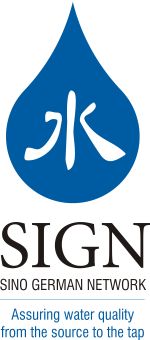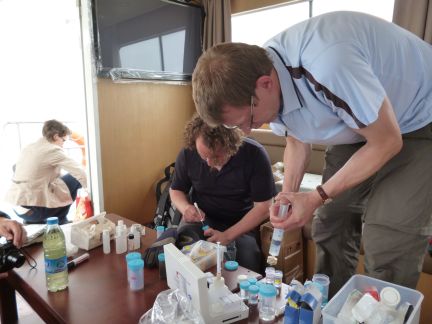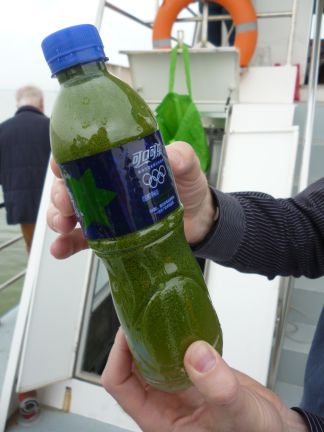SIGN-DYNAQUA: Development of monitoring technologies within a Sino-German research and development network to study dynamics of water quality in Lake Taihu, China
- Ansprechperson:
,
- Projektgruppe:
Environmental Mineralogy and Environmental System Analysis
- Förderung:
SIGN-DYNAQUA is funded by the Federal Ministry of Education and Research of Germany (BMBF grant no. 02WCL1336B)
- Starttermin:
2015
- Endtermin:
2018
Vorhaben
SIGN
|
The KIT working group of Environmental Mineralogy and Environmental System Analysis (ENMINSA) is part of the Sino-German research and development Network (SIGN). SIGN aims at ‘assuring water quality from the source to the tap’ within the heavily polluted Taihu basin in China. Since April 2015, SIGN is funded by the Federal Ministry of Education and Research of Germany (BMBF) as part of the Sino-German research and innovation program Clean Water for a period of three years.
Now, SIGN is performing an interdisciplinary research and development program to tackle various water related challenges within one of the most densely populated and economically important areas in China. Urban catchments, monitoring and early-warning systems, pollution control, drinking water treatment, drinking water distribution, training and capacity building, market introduction of new technologies, as well as strategies of good-governance form the major fields of work within SIGN. |
 |
DYNAQUA
Within the sub-project DYNAQUA (BMBF grant-no. 02WCL1336B) we advance scientific sensor technologies to study dynamics of water quality in Lake Taihu, China’. Main development objective of DYNAQUA is to build a profiling buoy which will carry in situ and online multi-sensor equipment for stationary and long-term water quality and meteorologic measurements. This buoy will be coupled with an advanced Fluoroprobe of the company BBE-Moldaenke (sub-project ERENSEN) that will be able to detect abundances and activities of several algae classes as well as the risk of toxins released by cyanobacteria (blue-green algae). Further, the profiling buoy will carry eight customized 50 mL water samplers with remote control release mechanism. A BIOFISH in situ and online multi-sensor system is also maintained by ENMINSA and will be adapted for monitoring of spatial water quality distribution under the very specific shallow water conditions in Lake Taihu.


(Photos: F. Eichinger, 07.05.2015)
Our studies mainly focus on the northern part of Lake Taihu around Wuxi city. As main research field we focus on the spatial and temporal evaluation of the obtained data records. The profiling buoy will deliver highly resolved long-term records of stationary depth profiles for numerous water quality parameters. Instead, the applied BIOFISH can deliver short-term records of comparable parameters with high spatial resolution. Densely recorded sensor parameters are often good proxies for the distribution of specific water constituents (e.g. nutrients and heavy metals). These are analyzed in our labs from selective water samples throughout the monitoring domain covered. Sources, fates and pathways of pollutants within Lake Taihu, as well as their corresponding driving forces, require in-depth analysis to derive profound and effective mitigation measures. Stated aim of our DYNAQUA research and development project is a significant contribution to this challenging task for the Chinese people.